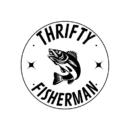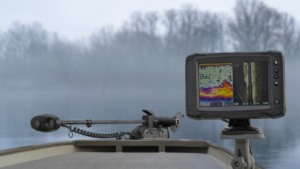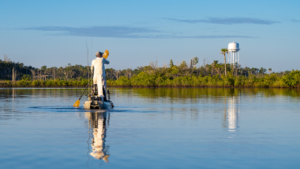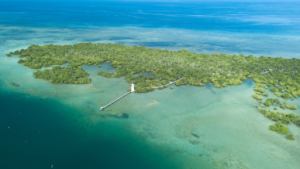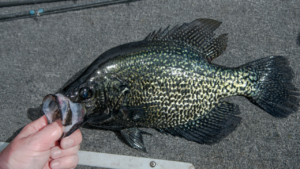There are few things better than fishing on a good lake full of crappie. These feisty panfish attract anglers to the water year-round and offer an exciting challenge on the end of a line. But in order to get the most out of your trip to the lake, having the right gear is essential!
Rods and Reels
The backbone of your crappie fishing gear is your rod and reel. Ultralight or light-action spinning rods are an excellent choice and paired with a smooth reel, allow for accurate casting into crappie hiding spots. Taking the time to carefully pick out the right rod and reel combo is crucial for success.
The backbone of your crappie fishing gear is your rod and reel. Ultralight or light-action spinning rods are an excellent choice and paired with a smooth reel, allow for accurate casting into crappie hiding spots. Taking the time to carefully pick out the right rod and reel combo is crucial for success.
But in order to get the most out of your rod, you have to pair it with the right reel. Spinning reels in the 1000 to 2500 size are ideal for crappie and similarly sized fish. The lightweight design gives plenty of finesse for reeling in crappie but still provides plenty of control. It’s also important that it has a smooth drag system, especially when these stubborn fish make a run.
Reels with multiple ball bearings will not only give you smoother retrieves, but it reduces the risk twists, snags, and breaks. Finding that perfect balance between a lightweight reel and a sensitive rod that can take on the challenge of crappie fishing can be a little difficult at times, but is well worth the effort!
Baits and Lures
Crappie can be picky eaters at times, so choosing the right bait or lure will play a huge role in your success. Don’t be afraid of experimenting with a variety of different colors and sizes in order to match the conditions. For example, bright colors tend to work well in murky water while more natural colors can work better in clear waters.
When targeting crappie specifically, there are four types of lures and baits that seem to always perform better than others. These include:
Jigs – Maybe the most popular crappie lure of all time, jigs come in a wide array of different colors and styles. Lighter weights, such as those around 1/32 to 1/16 ounce are solid choices that crappie just can’t seem to resist. Just remember to pack a few different colors and sizes to test which ones the crappie are biting on when you go.
Soft plastics – Curly-tailed grubs, tube jigs, and even smaller worms can provide a more lifelike appearance in the water and more closely resemble natural prey for crappie. If the fishing is slow, try some slow retrieves with these types of lures and be prepared for a sudden strike.
Crankbaits – Crankbaits can be great for covering large areas of water and diving down to varying depths. Choose smaller sizes and lifelike colors when targeting crappie, and try various depths to figure out where the fish are hiding in your favorite fishing spot.
Live bait – At the end of the day, there are few things that beat the allure of live bait on the end of a hook. Small minnows and shiners can be productive when all else seems to fail, but you must adjust the depth to the water conditions and where you believe the fish are hanging out.
Finding the Perfect Lake Location
Fishing lakes can often be easier said than done. They can be giant, with plenty of water to cover and lots of hidden areas that fish can hide. Crappie in particular like to hang out near underwater structures, but their exact location may differ depending on the time of year, time of day, and water conditions.
Take some time before you begin fishing to scout potential areas to find fish. From fishfinders to simply scouting around the lake for areas that look good, using a little time to scout for drop-offs, channels, or structures will take your success to the next level. Once you’ve found some ideal spots, you can begin to plan your approach.
Crappie Seasons and When to Fish
The time of year will play a major role in your success when chasing crappie. Spring is the most popular time to chase them, as they are spawning and move into shallow waters. Casting lures around fallen trees, docks, rocks, and brush piles in shallow waters can be very productive. Between the weather and the increased fish activity, you don’t want to miss out this time of year!
As the warmer months progress, crappie will start to move into deeper waters. This will take a little more finesse to convince them to bite, but jigging near structures in deeper waters can often find success. Early mornings and late afternoons will be your best friends during this time of year.
Moving into winter, crappie become much more lethargic. This will mean you need to change your tactics once again. Slow down your presentations, and really experiment with various depths. Slow, gentle movements of the bait and lure will often be much more effective when trying to get a bite when it’s cold out.
Final Thoughts
As you prepare for your next fishing trip on the lake, taking the right rods, reels, and lures will make or break your success. But don’t discount doing your homework, finding the right areas to fish, and using the right tactics depending on the time of year you find yourself fishing in. Crappie are some amazing fish, and once you get the hang of it, you will never want to leave the lake again. So whether you’re a novice angler or a seasoned fisherman, arm yourself with the right fishing gear and you’ll have no problem bringing home plenty of crappie for dinner!
